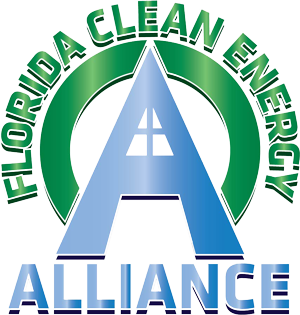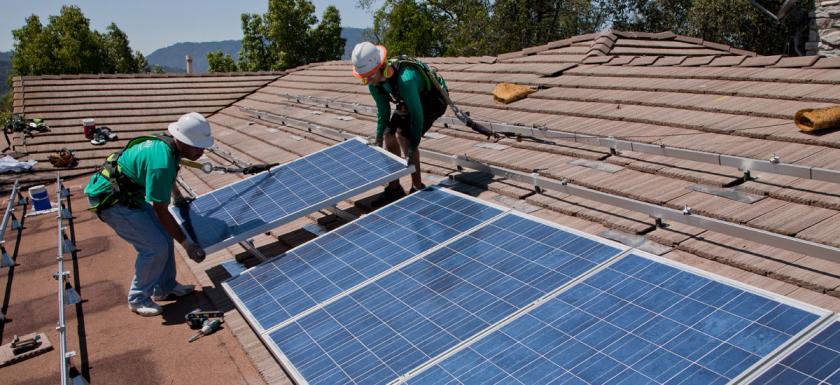For financial, environmental, ethical, and practical reasons, it’s time to talk about solar energy. Solar energy is easy-to-understand, highly subsidized by federal, state, and local governments, a good investment for homeowners, and inherently environmentally sustainable. It also makes great sense: instead of churning out energy by burning fossil fuels like coal and natural gas, solar energy comes directly from the sun.
How Do Panels Work?
Solar panels, positioned on top of roofs, convert sunlight into electricity. The panels are made of photovoltaic (PV) cells, which transform sunlight into direct current (DC) electricity. An inverter, often placed near your home’s electrical panel, then converts that DC electricity into alternating current (AC) power for your home (google.com/get/sunroof).
More simply, solar panels take already available sunlight and convert it into electricity, allowing you to do things like bake bread, blow dry your hair, and run your dishwasher. A monitoring system then sends information about your energy usage to your solar provider, who can use the data to further optimize performance.
How Much Does it Cost?
Depending on your state’s legislation, local weather, local electricity prices, and current solar costs, an investment in solar will likely, over the long-term, pay for itself. Factors like the angle, material, and size of your roof, plus the amount of sunlight that it receives daily, are also important to consider. For some homeowners, a part-traditional electricity, part-solar electricity scenario is ideal.
Luckily, a variety of easy-to-use online calculators, including Solar-estimate.org (originally funded with a grant from the Department of Energy) and Google’s Project Sunroof (powered by Google Earth), allow for an estimate of potential savings in a matter of moments. These calculators typically paint a favorable picture of savings, especially over the long term. However, they often do not include the estimated increase in a solar-powered home’s resale value. Research by Lawrence Berkeley National Laboratory, part of the Department of Energy, shows that, on average, solar panels increase home resale values by approximately 14,000$ (2).
So what does the government think about all of this?
They like it . . . a lot. Via the Solar Investment Tax Credit (ITC), the federal government has extended a 30 percent tax credit for 2019 on solar systems installed on residential and commercial properties (seia.org). As long as solar construction begins in 2019 (with rates significant, though dropping slightly in successive years), this means that 30 percent of total system costs are paid back as a federal income tax credit.
Furthermore, many state governments offer rebates for installing solar. The Database of State Incentives for Renewables & Efficiency is a great place to learn more. Many states also offer net metering, meaning that when you generate excess electricity via solar, power companies will buy the surplus from you. Lastly, Solar Renewable Energy Credits (SRECs) are also available in many states. Essentially, in some states utilities are required to produce a certain percentage of energy from renewable sources each year. To accomplish this, they can purchase credits generated by solar-using homeowners. According to EnergySage.com, an online tool for comparing solar providers, these credits can amount to thousands of dollars paid from utility companies to homeowners each year.
How is solar good for the environment and the US economy?
Traditional electricity is produced by burning fossil fuels. When these fossil fuels burn, they produce gases that pollute the air and contribute to climate change. Furthermore, fossil fuels are finite, meaning that they are scarce, precious resources subject to global price fluctuations. Fossil fuel energy production also requires significant amounts of water for cooling. Thus, vast amounts of water are expended, and water shortages can diminish energy generation. Add in the fact that solar has created hundreds of thousands of jobs and billions of dollars of investment to the US economy, and the reasons to consider it are even more compelling (usgbc.org).
How do I get started?
Project Sunroof and Solarestimate.org, along with a variety of other easy-to-find online calculators, provide great starting points to learn about solar’s viability in your location. Project Sunroof provides a great visual on the solar purchase process, which it estimates at 3-6 months from start (cost analysis) to finish (clean energy powered home). Energysage.com and Consumer Affairs provide great, impartial information on local solar provider options. Most providers offer leasing or upfront payment options. Lastly, if you want to learn more about how it all works, NASA has an illuminating article about the history and science of photovoltaics.

